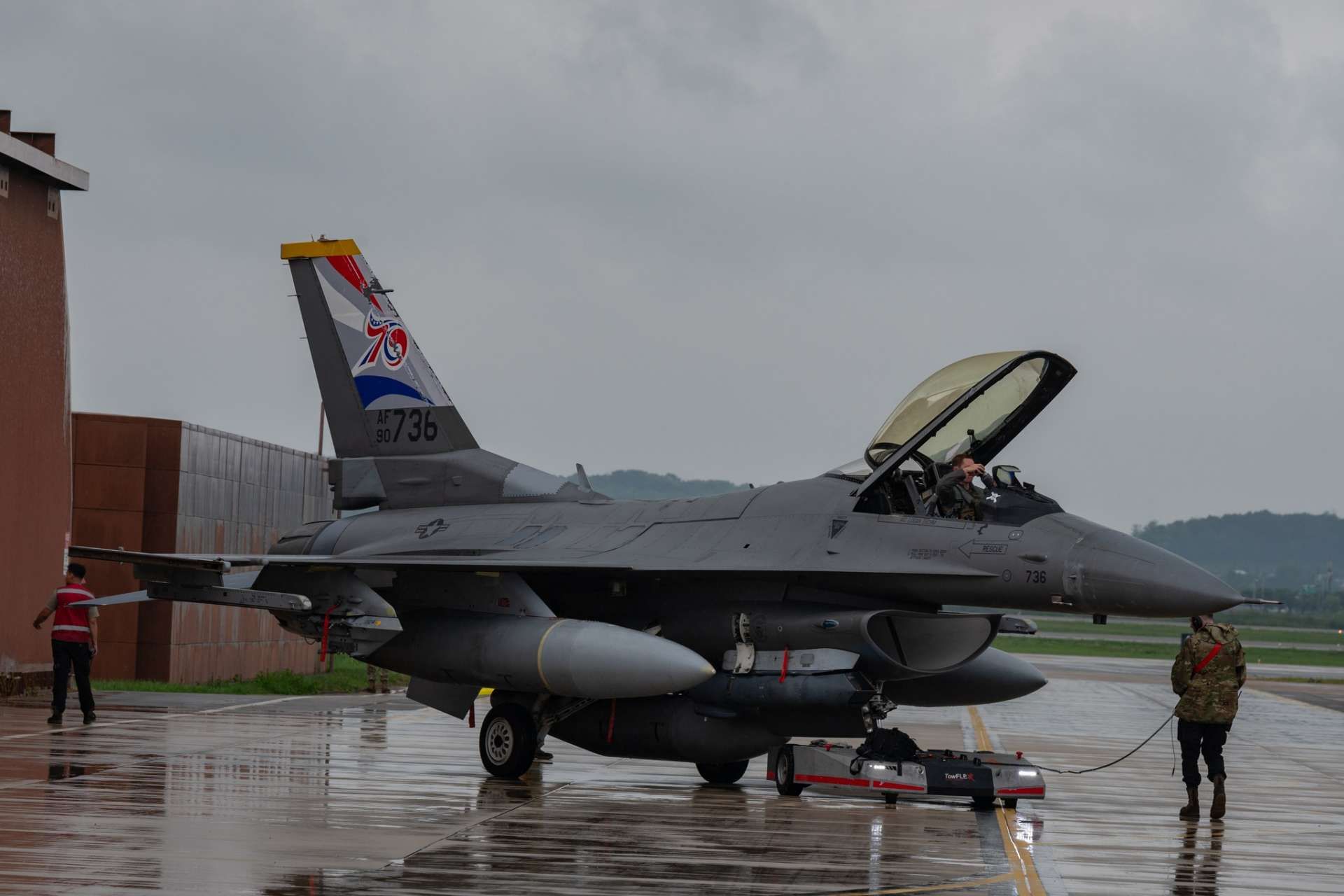Breaking News
US Enhances South Korea Air Power by deploying 31 F-16 Viper Fighters to Form a Super Squadron.
The U.S. 7th Air Force announced a strategic enhancement of its combat readiness in South Korea, with a temporary increase in the deployment of F-16 Viper fighter jets to Osan Air Base. As part of a yearlong initiative, 31 F-16s will be stationed at the base, creating what the Air Force terms a "Super Squadron."
Follow Army Recognition on Google News at this link

USAF F-16 Viper Multirole Fighter Jet (Picture source: US DoD)
This decision involves relocating nine F-16s from the 8th Fighter Wing at Kunsan Air Base to the 36th Fighter Squadron at Osan, located approximately 60 kilometers south of Seoul. The move will elevate the number of F-16s at Osan, significantly boosting the squadron's capabilities in terms of sortie generation, manpower, maintenance, and logistics.
Lt. Gen. David R. Iverson, commander of the 7th Air Force, emphasized the strategic importance of the reassignment. "This test is an opportunity for us to see if squadrons of this size increase our training effectiveness while also increasing our combat capability if deterrence fails," he stated.
The "Super Squadron" initiative is designed not only to enhance training effectiveness but also to prepare the U.S. Air Force for various operational scenarios, ensuring swift and efficient responses should deterrence measures falter. The Air Force will closely monitor the impact of this realignment on its overall operational readiness and capability in the region.
The U.S. 7th Air Force plays a central role in the American military presence in South Korea, significantly contributing to the defense and regional stability in the Korean Peninsula. This unit of the United States Air Force is primarily responsible for the operation, maintenance, and administration of American air forces stationed in South Korea. It also ensures command and control of air operations, coordinating air defense, surveillance, and reconnaissance missions, while supporting ground combat operations when necessary.
The U.S. 7th Air Force is a key component of the United States Forces Korea (USFK), part of the U.S. Indo-Pacific Command, highlighting its strategic importance in the Asia-Pacific region. The main mission of this unit is to deter any aggression against South Korea, while maintaining a rapid response capability in case of conflict or crisis. It works closely with the South Korean armed forces to strengthen combined capabilities and ensure an effective defense of the peninsula.
Kunsan Air Base, located near the city of Gunsan on the west coast of South Korea, is one of the main facilities used by the 7th Air Force. It houses the 8th Fighter Wing, nicknamed "Wolf Pack," which is equipped with F-16 fighter jets. Kunsan serves as an advanced staging post for air operations, playing a crucial role in force projection and the rapid response capability of the US Air Force in the region. The base is also prepared to host additional reinforcements if necessary, allowing for a rapid increase in firepower and logistical support in crisis situations.
The F-16 Block 70/72 represents the latest generation of the renowned F-16 fighter jets, combining advanced and integrated capabilities. This innovative model is equipped with cutting-edge avionics, a proven Active Electronically Scanned Array (AESA) radar, a modernized cockpit with new safety features, sophisticated weapons, conformal fuel tanks, an improved performance engine, and an extended structural service life of 12,000 hours. The operational capabilities of the Block 70/72 are enhanced by an advanced datalink, targeting pod and weapons, Infrared Search and Track (IRST), precision GPS navigation, and a digital flight control computer with enhanced autopilot/auto throttle and an automatic ground collision avoidance system (Auto GCAS).
The advanced APG-83 AESA radar of the F-16 Block 70/72 offers greater situational awareness, increased flexibility, and faster all-weather targeting. The APG-83 provides the F-16 with fifth-generation radar capabilities by leveraging technology from the F-22 and F-35 AESA radars. This radar is integrated with a new active and passive internal electronic warfare system, called Viper Shield, which includes a digital radar warning receiver (DRWR) designed to work with the APG-83 radar.
The Block 70/72 features a new center pedestal display (CPD) that provides critical tactical imagery to pilots on a high-resolution 6"x 8" screen. This display allows pilots to maximize the use of AESA and targeting pod data. The CPD offers color moving maps, larger and easier-to-manage air-to-air situation displays, zoom functionality, and the ability to switch information between displays, as well as a digital display of flight instrument data. These improvements, combined with the new structures and capabilities of production aircraft, ensure that the international F-16 fleet will remain operational until 2060 and beyond.
To date, more than 4,700 F-16s have been ordered by 30 international customers. The Block 70/72 stands out with its exceptional features, such as an advanced APG-83 AESA radar with improved radar modes, a modular mission computer and upgraded avionics architecture, as well as an infrared search and track (IRST) capability. It is equipped with an advanced datalink, targeting pod and sophisticated weapons, new cockpit displays and safety improvements, a new digital flight control computer with enhanced autopilot/auto throttle, and an automatic ground collision avoidance system (Auto GCAS). Additionally, it features a digital communication system with 3D audio and precision GPS navigation.
The F-16 Block 70/72 boasts impressive specifications: a length of 15.027 meters (49.3 feet), a height of 5.090 meters (16.7 feet), a wingspan of 9.449 meters (31.0 feet), and an empty weight of 9,207 kilograms (20,300 pounds). It reaches a speed of 1,500 mph (Mach 2+) and has a thrust class of 13,000 kilograms (29,000 pounds), with a maximum takeoff weight of 21,772 kilograms (48,000 pounds). Designed with a load factor of 9g, it offers a prolonged service life of 12,000 hours. With its advanced technologies and capabilities, the F-16 Block 70/72 is designed to maintain air superiority until 2060 and beyond, providing an unmatched defense solution to air forces worldwide.


























